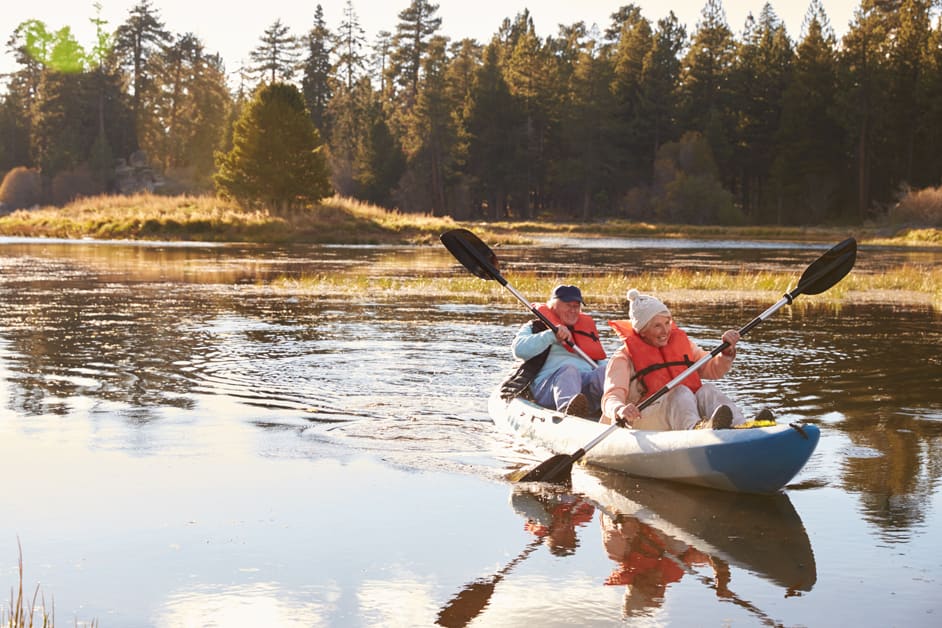Introduction
Knee pain can be really tough. It can stop you from doing the activities you enjoy. But you don’t have to give up on fitness! Low-impact sports can still bring you lots of benefits. This guide will explain the potential advantages of low-impact sports for those with knee pain and how to get started safely.
Low-impact sports can help improve joint mobility, strengthen muscles, and boost balance and coordination. Plus, aerobic activity can help reduce depression caused by chronic pain. Low-impact sports provide an excellent way to stay healthy without putting too much stress on your knees and other joints.
Types of Low-Impact Sports
Low-impact sports are awesome! They’re a great way to get fit without hurting your knees. Plus, they can be tailored to any fitness level. Benefits include physical, mental and social perks.
Some popular low-impact sports? Swimming, cycling and Pilates. Let’s go over the special features and advantages of each one.
Swimming
Swimming is great for people with knee or joint pain. It helps reduce stiffness and improve flexibility. Plus, it’s a low-impact sport. It strengthens muscles without putting strain on joints. It’s an aerobic exercise with types like freestyle, backstroke, breast stroke, butterfly, and sidestroke. It can be tailored to any fitness level. For example, someone with knee pain can start off slow with a few lengths. Water buoyancy reduces the body’s impact compared to land exercises. This allows for better range-of-motion exercises which will loosen and strengthen the muscles around the knees.
Swimming can be done in a pool or out at sea. Swimming laps in a pool is great for cardiovascular health. Open water swimming provides more resistance and exercise.
Cycling
Cycling is perfect for those with knee pain. It needs little force and provides support and stability to the lower body. The leg movement massages and loosens up muscles, improving blood flow and aiding healing. It’s a fun form of exercise as you can explore your environment. Plus, it’s adjustable with gears, so you can make it easier or harder.
Cycling offers a good cardio workout without stressing the knees. If that’s not possible, then a stationary bike has the same benefits without the impact on the knees.
Walking
Walking is an awesome way to get fit! And it’s a great time to catch up with friends and see the sights. Though walking might seem low-impact, there are measures you should take:
- Wear comfy shoes with good support.
- Gradually increase your pace and distance.
- Be aware of bumpy surfaces.
- Steer clear of slippery or hazardous spots.
- If you can, use a walking stick for balance and stability.
It’s important to stay hydrated during exercise. Drink plenty of water before, during, and after your walk. When you’re done, take a break, stretch your legs and give them a rest.
Walking is an excellent low-impact activity. It can raise your fitness levels while protecting your joints from damage caused by more intense activities like running and jumping.
Yoga
Yoga is an awesome low-impact exercise. It’s great for relieving knee pain. It involves gentle stretching and strengthening. Many poses can be modified. It also has mental benefits. Stress and tension related to knee pain can be relieved.
Different types of yoga exist. Find one that works for you. Classes may have instructors trained to help with special conditions like arthritis or fibromyalgia.
Benefits of Low-Impact Sports
Knee pain sufferers, rejoice! Low-impact sports like yoga, tai-chi and swimming can provide a number of benefits. Not only can they help manage the pain, but they can also improve range of motion, flexibility and strength.
What are the specific benefits? Let’s take a look!
Improved Flexibility
Low-impact sports can be great for increasing flexibility and reducing arthritis-related knee pain. Flexibility allows for better range of motion, which is beneficial for osteoarthritis as it helps reduce stiffness and discomfort.
Also, low-impact sports are less intense, so they protect your knee from further injury. You can build strength and intensity slowly, and achieve goals safely. This makes them good for people with existing knee pain.
Swimming and biking are enjoyable and low-impact. They can lessen discomfort while still being fun. So, participating in low-impact sports offers many advantages for those with knee pain due to osteoarthritis or other conditions.
Improved Strength
Knee pain can be persistent. To help, try doing low-impact activities, like walking, swimming, biking, and Pilates. Strengthening muscles around the knee will reduce pressure. This can help ease or prevent issues. Moving your affected joint using a full range of motion is another benefit.
A study in the Orange Journal showed swimmers with knee arthritis had improved stability, strength, and range of motion after aquatic therapy. Bike riding is suggested for mild to moderate osteoarthritis. It can be a safe way to add cardio when done with a doctor’s care. Walking strengthens the quadriceps and increases flexibility, reducing stress on joints. Pilates offers low-impact exercises to target core muscles. This gives stability and support for weak joints, without high impact that could worsen knee pain.
Improved Balance
Low-impact sports involve low levels of exertion and minimal pressure on muscles and joints. This provides many health benefits, such as improved balance.
These activities usually involve repetitive motions. Also, elements like poles and other equipment can help strengthen core muscles while also building coordination between feet, legs and arms. This helps maintain balance during movement.
Balance is essential for daily activities like walking stairs and reaching for something high. Improving balance not only helps with daily functioning, but also with other physical activities like running or team sports.
Low-impact sports let you work on balance in a controlled way, with less risk of injury. This helps train for better balance control.
Reduced Joint Pain
Low-impact sports are perfect for folks with chronic joint pain or recovering from injury. Swimming, yoga, cycling and tai chi provide safe and successful ways to be physically active without extra stress on the knees, hips, and other joints. As well as reducing pain, these low-impact sports can strengthen muscles and increase flexibility, resulting in better health.
Low-impact sports put less pressure on weight-bearing joints than activities like running or jumping. This means less discomfort and protection from flare-ups, while conditioning your muscles and reducing inflammation. A recent study discovered that those who did low-impact sports saw a major decrease in symptoms after just four weeks of exercise, unlike those who did not do any.
Regular low-impact exercise presents several advantages for knee pain sufferers. They can look forward to:
- Less inflammation and stiffness;
- Improved coordination and balance;
- An improved outlook due to endorphins released during exercise.
How to Find Low-Impact Sports
Knee pain? Looking for activities that won’t aggravate it? Try low-impact sports. No running, jumping, or sudden movements! This article reveals how to find these helpful sports. Get ready to reduce knee pain!
Local Recreation Centers
Searching for methods to stay active with less risk of injury? Local recreation centers provide low-impact sports. These activities often include using lighter weights or your own bodyweight as resistance. Yoga classes, swimming, Pilates and cycling are some options.
No access to a pool or rec center? No worries! Running can help you shape up and gain stamina in a low-impact way. Other alternatives like walking and hill climbing (if the terrain allows) are available too. Home workout videos and sessions are great options to stay active with minimal strain.
Low-impact sports offer numerous benefits. However, it is essential to practice proper form while exercising to avoid any injuries from wrong form or execution.
Online Resources
Knee pain sufferers who want to stay active without making their condition worse, can find many low-impact sports. There are lots of resources online to help find the right sport and group.
- Local fitness center websites have classes for knee pain sufferers.
- Social media groups are for connecting with people with similar interests.
- Organizations provide listings of local events and clubs.
- National websites like Sports4Knees offer info on low-impact sports and instructions for getting started safely.
Personal Trainers
Sports medicine doctors and personal trainers can help those with knee pain. The trainers are useful because they can customize an exercise routine to a person’s strength and range of motion. They can also suggest goals, form, and technique that fits the body. Having a trainer helps people reach their goals without getting injured.
Low-impact activities may include:
- Swimming
- Biking
- Aqua aerobics
- Yoga
- Pilates
Before beginning, talk to your doctor to monitor progress.
Conclusion
To sum up, low-impact sports can be useful for those with knee pain. They cause less harm to the joint and can help reduce the pain. Studies show that doing physical activity often is good for health and well-being.
A few low-impact sports to do are:
- Yoga
- Tai chi
- Cycling
- Walking
- Swimming
When doing exercises for joint health, it’s best to go slow and check with a doctor or physical therapist. Also, resting when needed is very important. It’s a smart idea to team up with a healthcare provider to figure out which activities are best for your knee pain, and what risks may come with them.
Frequently Asked Questions
Q: What are the benefits of low-impact sports for knee pain sufferers?
A: Low-impact sports are beneficial for knee pain sufferers because they are kinder to the joints and put less stress on the knee. Low-impact activities like swimming, yoga, and cycling are excellent ways to stay active while reducing the risk of further injury or pain in the knees.
Q: What types of low-impact sports are best for knee pain sufferers?
A: Swimming, yoga, cycling, and walking are some of the most popular low-impact activities for knee pain sufferers. These activities are gentle on the joints, while still providing a good workout. Pilates and tai chi are also great low-impact options.
Q: Are there any risks associated with low-impact sports for knee pain sufferers?
A: While low-impact sports are generally considered safe for knee pain sufferers, it is important to listen to your body and stop when you start to experience discomfort. Additionally, some low-impact sports may require a certain level of fitness, so it is important to speak to your doctor before starting any new activity.





